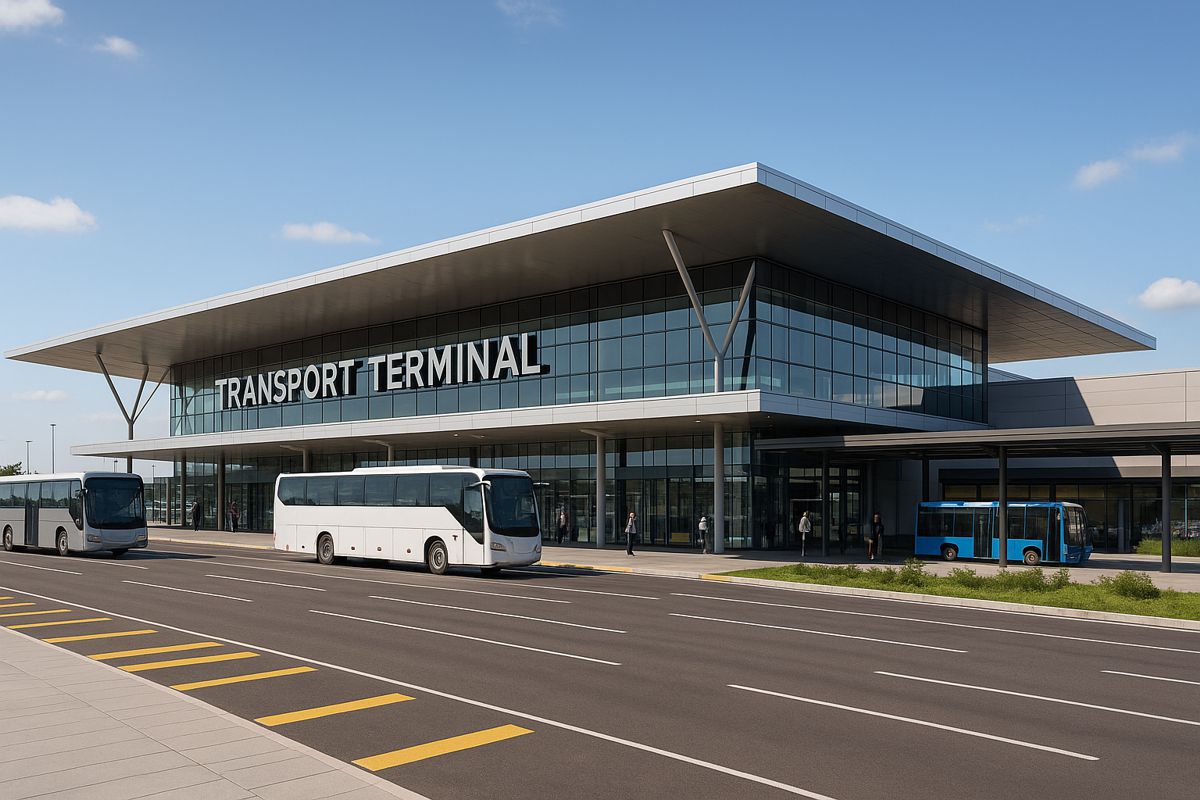Megawide’s Vision Takes Shape with South Luzon’s Next-Gen Terminal
In a landmark ceremony held on 23 September 2025 at the Main Ballroom of The Manila Southwoods Golf & Country Club in Carmona, Cavite, the Government of Carmona and Megawide One Mobility Corporation inked a Joint Venture Agreement (JVA) for the South Luzon Integrated Terminal Exchange (SLITx).
This partnership heralds a new era in Philippine transport infrastructure, promising not just a modern terminal but a catalyst for regional economic dynamism.
What SLITx Aims To Be
SLITx is more than another bus terminal; it’s a transformative public-private partnership (PPP) project intended to relieve traffic pressure, enhance road safety, and give commuters dignity and comfort in their journeys. Positioned on a 5.3‑hectare parcel beside the South Luzon Expressway (SLEX) in Barangay Maduya, Carmona, the development will integrate city and provincial buses, waiting and circulation facilities, commercial leasable space, and logistics operations, all in one hub.
Under the scope of the JVA, the joint venture will handle financing, design, construction, operations and maintenance, as well as management of the commercial assets on site. The agreement spans 30 years from the commencement of construction unless both parties agree to an extension.
Because the SLITx is to be delivered under the DBFOM (Design‑Build‑Finance‑Operate‑Maintain) model, the private partner assumes a major share of responsibility and risk, but also a large share of opportunity.
Economic and Regional Stakes
For policy makers, investors, and industry professionals, SLITx represents more than bricks and mortar; it is a linchpin for regional competitiveness. Congressman Roy Loyola of Cavite’s 5th District made no bones about its broad impact:
He called it “a shared vision of sustainable urban development” and said the project will enable Cavite, Laguna, and neighbouring provinces to compete with Metro Manila by upgrading connectivity, generating jobs, and driving inclusive growth.
His point is clear: infrastructures like SLITx can help decentralise growth away from Manila, redistribute economic opportunity, and tether peripheral provinces more tightly into the national growth engine.
Beyond immediate commuting benefits, the hub will serve interprovincial flows from Quezon, Batangas, Laguna, and the Bicol corridors, taking pressure off major national roads and enabling better logistics linkages.
Megawide’s Role and Vision
For Megawide One Mobility Corporation, SLITx is a signature project in its transport‑oriented development portfolio. Jaime Raphael Feliciano, President of Megawide One Mobility, flagged the company’s dedication to excellence and a forward‑looking design philosophy:
He affirmed: “This will be more than Carmona’s terminal. It will connect multiple destinations across Luzon and beyond.”
Feliciano highlighted future‑ready components: smart security systems, park‑and‑ride facilities, electric vehicle support, integrated digital infrastructure, and passenger amenities. In short, SLITx is intended as a southern gateway, not a simple terminus.
This ambition aligns with Megawide’s track record. As a Filipino construction conglomerate, it has already ventured into transport infrastructure, including the Parañaque Integrated Terminal Exchange (PITX) and airport projects.
Technical and Operational Expectations
While the JVA sets out broad roles, the city government of Carmona has already put out calls for detailed proposals. Interested developers, both local and international, are invited to submit comparative offers covering:
- Detailed engineering and design
- Construction and civil works
- Procurement of terminal systems and equipment (CCTV, HVAC, command centre)
- Operational strategy, management, and maintenance
- Commercial asset optimisation
Among the deliverables: internal road networks, parking, transport bays, clear passenger flows, and supporting infrastructure for retail and logistics components.
Successful bidders will essentially own, run, and maintain key systems while ensuring compliance with service levels, making this a high‑stakes PPP venture with long horizon returns.
Challenges, Risks & Strategic Imperatives
As with any infrastructure PPP of this magnitude, SLITx faces a suite of challenges. Among them:
- Land and right‑of‑way constraints: even though 5.3 ha is secured, site integration with SLEX and local access will require careful coordination.
- Traffic and staging management during construction: SLEX is a busy corridor; construction must avoid gridlock.
- Financial risk and revenue modelling: commercial asset yields, passenger fees, and subsidy mechanisms will need to align to make the business case viable.
- Regulatory and permits: local, provincial, and national approvals must dovetail without delay.
- Stakeholder engagement: community acceptance, resettlement if any, and alignment with local development must be handled astutely.
Still, if the project is executed smoothly, it could become a model for terminal hubs across the Philippines and Southeast Asia. Indeed, SLITx is part of a broader trajectory: other terminal exchanges, such as Taguig’s planned interchange, signal the Philippines moving toward intermodal transport rationalisation.
Strategic Value for Stakeholders
For investors, SLITx offers a long-term revenue stream (commute fees, commercial rents, parking) and exposure to a large mobility market. For construction firms and engineering firms, it’s a showcase asset in the transport-PPP project finance space. For policy makers, it embodies cross-sectoral benefits: traffic decongestion, regional inclusion, safer roads, cleaner urban mobility.
The project also dovetails with nation‑wide ambitions to modernise transportation systems and relieve the dominance of Metro Manila as the central hub. In doing so, SLITx may act as a catalyst in shifting more growth toward secondary cities.
Recommendations & Key Considerations
To ensure SLITx’s success, stakeholders should heed these guiding principles:
- Rigorous risk allocation: PPP contracts must clearly delineate which party bears each risk (construction, demand, operations).
- Performance‑based contracts: service levels (e.g. waiting times, safety, cleanliness) should be tied to penalties/incentives.
- Light but robust digital infrastructure: invest in future‑proof systems (IoT, AI, smart ticketing) early.
- Integrated mobility planning: ensure the terminal connects seamlessly with local transport, last‑mile connectivity, and other modes.
- Phased implementation: begin operations in core modules while adding ancillary commercial areas later to de‑risk ramp up.
These aren’t just best practices, they may well define whether SLITx becomes a regional benchmark or a cautionary tale.
A Gateway to the South
What commenced on 23 September is more than a simple signing. It marks the opening chapter of a grand infrastructure narrative. SLITx promises to rewrite how commuters traverse Luzon, to inject vitality into Cavite and its neighbours, and to redefine the business of terminal infrastructure in the Philippines.
In effect, the Government of Carmona and Megawide are not merely building a terminal, they’re constructing a gateway to the south, stitching communities with mobility, commerce, and opportunity.




















